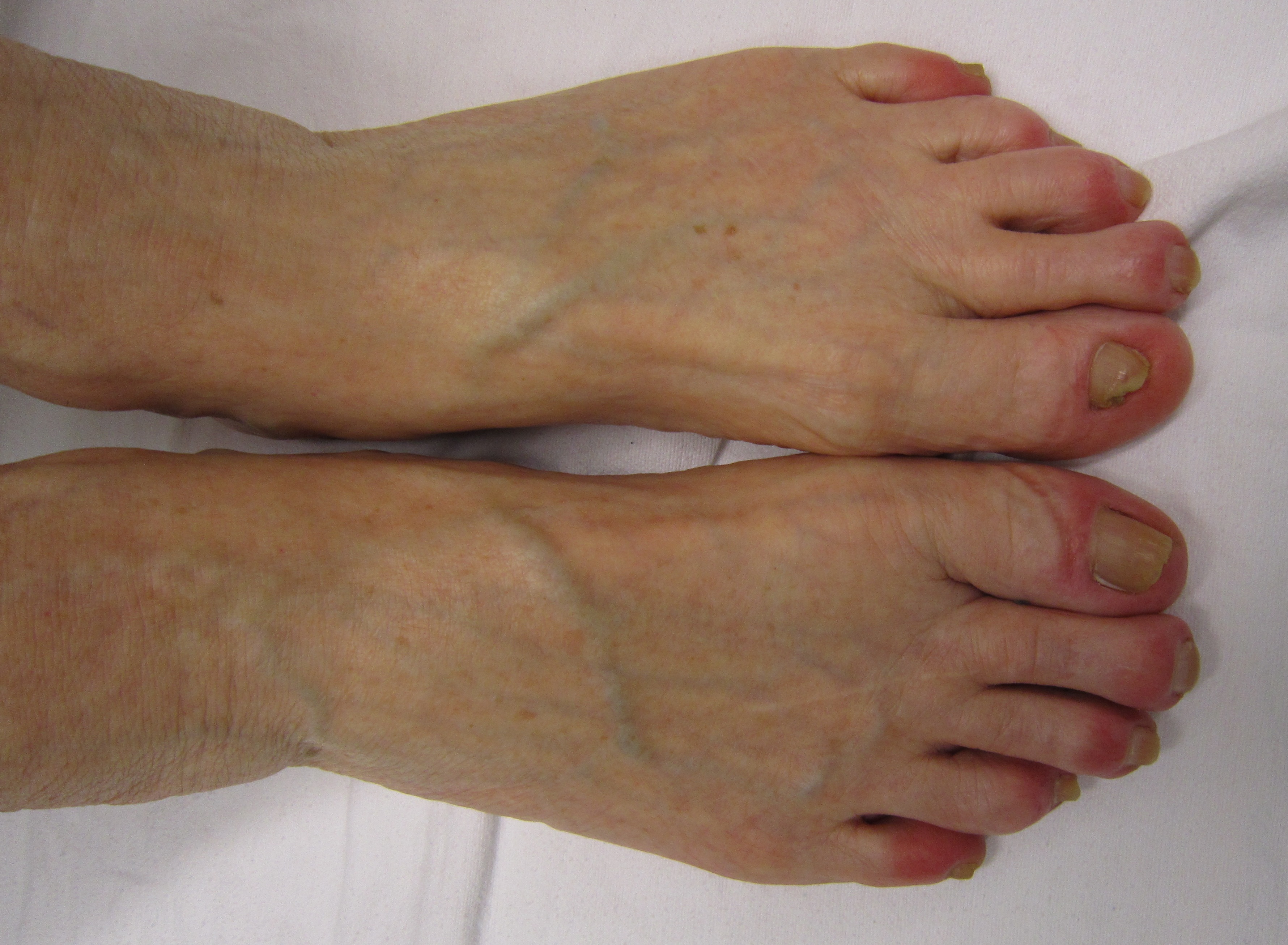|
Erythrocyanosis Crurum
Erythrocyanosis crurum is a skin condition, a variant of acrocyanosis caused by chronic exposure to cold. See also * Chilblains * List of cutaneous conditions Many skin conditions affect the human integumentary system—the organ system covering the entire surface of the body and composed of skin, hair, nails, and related muscle and glands. The major function of this system is as a barrier against t ... References * * External links Skin conditions resulting from physical factors Diseases of arteries, arterioles and capillaries {{Cutaneous-condition-stub ... [...More Info...] [...Related Items...] OR: [Wikipedia] [Google] [Baidu] |
Acrocyanosis
Acrocyanosis is persistent blue or cyanotic discoloration of the extremities, most commonly occurring in the hands, although it also occurs in the feet and distal parts of face.Kurklinsky AK, Miller VM, Rooke TW. "Acrocyanosis: The Flying Dutchman." ''Vascular Medicine'' 2011 Aug;16(4):288-301Olin, J.W. (2004). Other peripheral arterial diseases. In L. Goldman & D. Ausiello (Eds.), ''Cecil Textbook of Medicine, 22nd Edition''. (Vol 1, pp. 475). Philadelphia: WB Saunders Creager, M.A. & Dzau, V.J. (2005). Vascular diseases of the extremities. In D.L. Kasper, A.S. Fauci, D.L. Longo, E. Braunwald, S.L. Hauser, & J.L Jameson (Eds.), ''Harrison's Prins of Internal Medicine'' (16th ed., pp. 1490). New York: McGraw-Hill (2006). Peripheral vascular disorders. In R.S. Porter, T.V. Jones, & M.H. Beer (Eds.), ''Merck Manual of Diagnosis and Therapy'' (18th ed., ch. 212). New York: Wiley, John & Sons Although described over 100 years ago and not uncommon in practice, the nature of this phenom ... [...More Info...] [...Related Items...] OR: [Wikipedia] [Google] [Baidu] |
Chilblains
Chilblains, also known as pernio, is a medical condition in which damage occurs to capillary beds in the skin, most often in the hands or feet, when blood perfuses into the nearby tissue resulting in redness, itching, inflammation, and possibly blisters. It occurs most frequently when predisposed individuals, predominantly women, are exposed to cold and humidity. Ulcerated chilblains are referred to as kibes. Temperature-related chilblains can be prevented by keeping the feet and hands warm in cold weather and avoiding exposing these areas to extreme temperature changes. Once the diagnosis of chilblains is made, first-line treatment includes avoiding cold, damp environments and wearing gloves and warm socks. Chilblains can be idiopathic (spontaneous and unrelated to another disease), but similar symptoms may also be a manifestation of another serious medical condition that must be investigated. Related medical conditions include Raynaud syndrome, erythromelalgia, frostbite, ... [...More Info...] [...Related Items...] OR: [Wikipedia] [Google] [Baidu] |
List Of Cutaneous Conditions
Many skin conditions affect the human integumentary system—the organ system covering the entire surface of the body and composed of skin, hair, nails, and related muscle and glands. The major function of this system is as a barrier against the external environment. The skin weighs an average of four kilograms, covers an area of two square metres, and is made of three distinct layers: the epidermis, dermis, and subcutaneous tissue. The two main types of human skin are: glabrous skin, the hairless skin on the palms and soles (also referred to as the "palmoplantar" surfaces), and hair-bearing skin.Burns, Tony; ''et al''. (2006) ''Rook's Textbook of Dermatology CD-ROM''. Wiley-Blackwell. . Within the latter type, the hairs occur in structures called pilosebaceous units, each with hair follicle, sebaceous gland, and associated arrector pili muscle. In the embryo, the epidermis, hair, and glands form from the ectoderm, which is chemically influenced by the underlying mesoderm th ... [...More Info...] [...Related Items...] OR: [Wikipedia] [Google] [Baidu] |
Skin Conditions Resulting From Physical Factors
Skin is the layer of usually soft, flexible outer tissue covering the body of a vertebrate animal, with three main functions: protection, regulation, and sensation. Other animal coverings, such as the arthropod exoskeleton, have different developmental origin, structure and chemical composition. The adjective cutaneous means "of the skin" (from Latin ''cutis'' 'skin'). In mammals, the skin is an organ of the integumentary system made up of multiple layers of ectodermal tissue and guards the underlying muscles, bones, ligaments, and internal organs. Skin of a different nature exists in amphibians, reptiles, and birds. Skin (including cutaneous and subcutaneous tissues) plays crucial roles in formation, structure, and function of extraskeletal apparatus such as horns of bovids (e.g., cattle) and rhinos, cervids' antlers, giraffids' ossicones, armadillos' osteoderm, and os penis/os clitoris. All mammals have some hair on their skin, even marine mammals like whales, dolphins, a ... [...More Info...] [...Related Items...] OR: [Wikipedia] [Google] [Baidu] |


